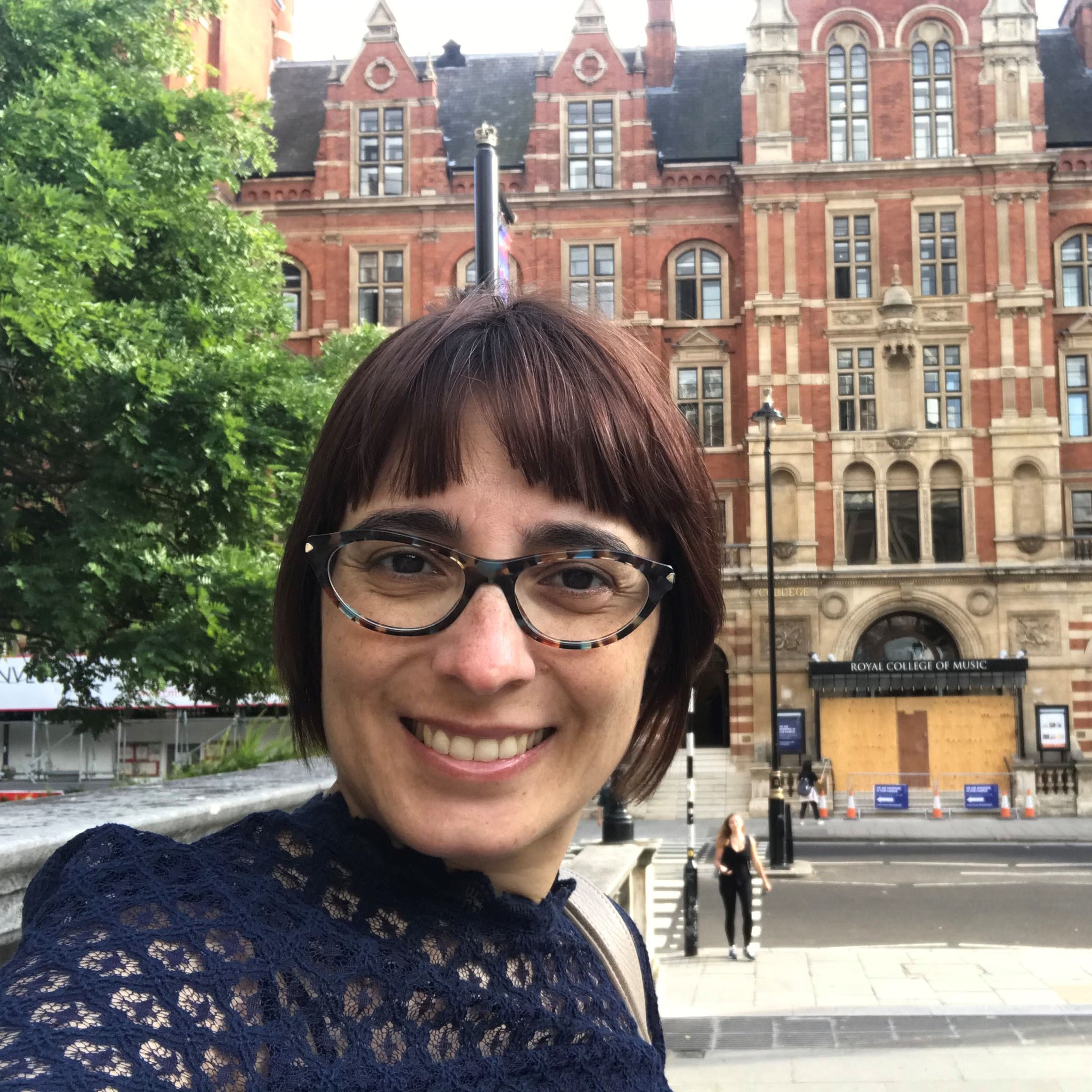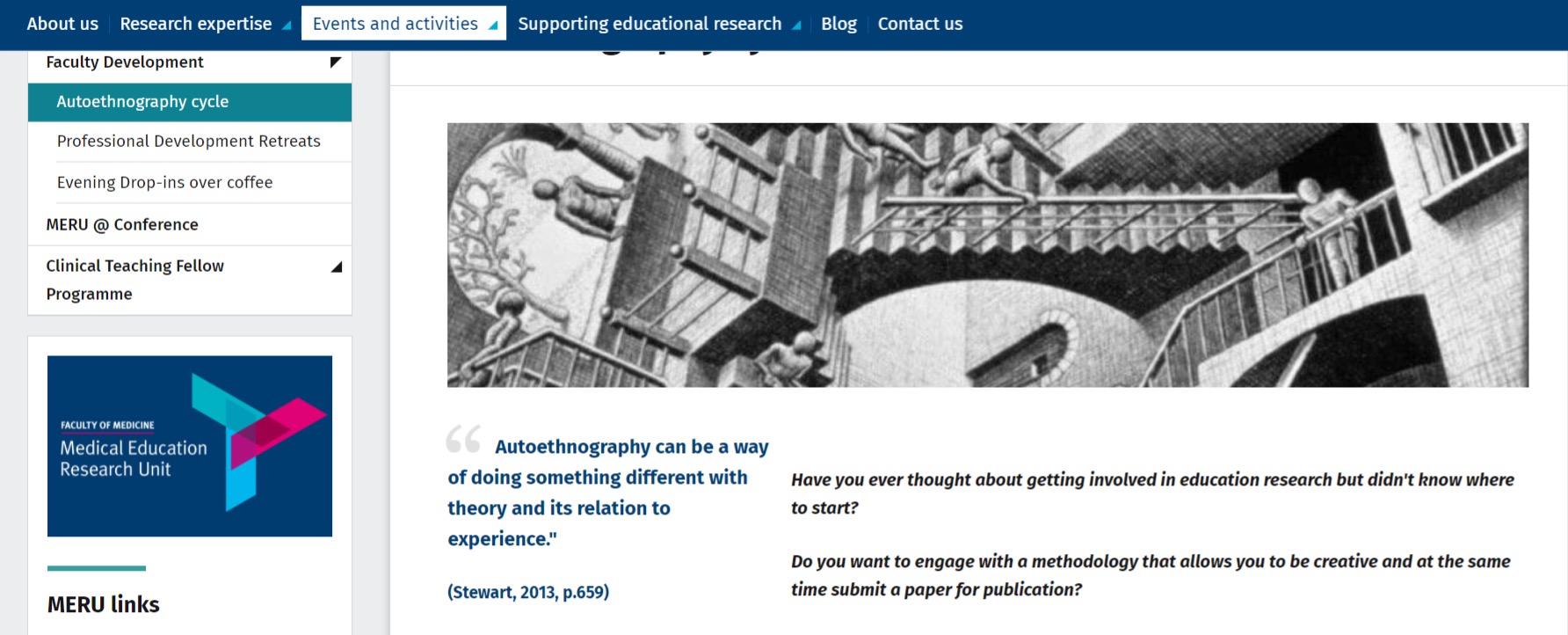Imperial Connection: Snapshots of an autoethnographic journey in medical education
 | By Dr Ana Baptista, Strategic Lead for Medical Education Transformation & Principal Teaching Fellow, Medical Education Research Unit, Faculty of Medicine, Imperial College London |
‘In the beginning, there was…’
… Curiosity for finding non-conventional research methods that 1) would allow accessing personal, in-depth, nuanced stories on teaching and learning and multiple journeys of professional and personal identity development; and 2) would be flexible enough to co-exist with other research methods, by adding new layers of inquiry into complex experiential narratives.
The autoethnography journey – an unprecedented strand of work – started in January 2020 with the first seminar. This marked the beginning of the ‘Autoethnography Cycle’: a scaffolded development programme offered by the Medical Education Research Unit (MERU) at Imperial’s Faculty of Medicine. 27 members of staff have since participated in related events.
Five staff members are currently working on autoethnographic pieces, both individually and also collaboratively with medical students or peers. Since July 2020, interactive seminars on autoethnography have reached 35 medical students and 23 students are engaged with collaborative autoethnographic projects. So far, we can count 8 academic presentations, and several manuscripts are underway.
‘Autoethnography is a journey, not a destination’: But what is autoethnography?
Autoethnography is a qualitative research method anchored in personal and reflective ways of looking at lived experiences while simultaneously describing and above all critiquing cultural beliefs, practices, experiences, theories: “When we do autoethnography, we look inward – into our identities, thoughts, feelings and experiences – and outward – into our relationships, communities and cultures” (Holman Jones, Adams & Ellis, 2016, p.46).
Recognising the limits of the positivist paradigm, autoethnography emerges as a method that emphasises the limits of ‘objective’ scientific knowledge, by focusing on individual, nuanced, complex and usually unheard stories, while “offering a novel avenue to engage in reflexivity” (Koopman, Watling & LaDonna, 2020, p.2).
Accessing more than one (single) reflexive narrative about lived experiences opens up possibilities to access diverse truths, frequently deep and rich in details as well as “otherwise inaccessible private human experiences” (Koopman, Watling & LaDonna, 2020, p.2).
‘An autoethnographic journey is a person in itself; no two are alike’: Examples from the autoethnography stream, MERU Annual Conference 2021
Here, four autoethnographic presentations invited participants to immerse themselves within different experiences and emotions of Imperial School of Medicine staff members and medical students.
Joana dos Santos1 (Teaching Fellow) explored the transition between research and teaching territories, reflecting on the threshold concepts she experienced by moving into an educational role. She sheds light into a transformational experience, full of surprises and ‘awe’ moments.
Kinan Wibha2 (4th year medical student) presented a collaborative autoethnography exploring the lived experiences of a bilingual medical student as a translator during the COVID-19 pandemic. Emotional, ethical and cultural reflections arise as key to discuss the impact on medical education.
Ore Mohammed3 (4th year medical student) invited the audience to join her in looking into her strong – but critical – emotional experiences of death on clinical placements. In this collaborative autoethnography, she illuminates how those encounters with patients and healthcare professionals impacted on her.
Lydia Boynton4 (Senior Teaching Fellow) shared how, through an art competition followed by an autoethnographic approach, first year medical students reconnected with themselves and their studies. This collaborative autoethnography highlights that creativity has the potential to reigniting medical students’ passion for art and studying anatomy.
‘Autoethnography is an opportunity, seize the day’: Do you also want to become part of this journey?
Through 2021-22, we will have a Winter and a Spring Autoethnography Cycle to maximise the opportunities for colleagues’ engagement. We therefore invite you to become part of this journey!
The Cycle has been designed in a scaffolded way to support participants to start working on an autoethnographic text to be submitted for publication. It encompasses the following sessions:
1) seminar on autoethnography; 2) ‘reading club’; and 3) planning writing.
For more information please visit: https://www.imperial.ac.uk/medicine/meru/events-activities/faculty-development/autoethnography-cycle/
Please contact Dr Ana Baptista direct at [email protected] with any queries.
–
Titles and authorship of the presentations:
1 From research to teaching territories: An autoethnographic approach to STEMM threshold concepts, by J Dos Santos
2 Missed in Translation, Found in Reflection: a collaborative autoethnography exploring the lived experiences of a bilingual medical student as a translator during the COVID-19 pandemic, by K. Wihba & A. Baptista
3 A body and a dark hospital room: Medical student experiences of death on clinical placements O. Mohammed & A. Baptista
4 Blending the Territories of Science and Art: How Creativity Can Allow Medical Students to Reconnect with Themselves and their Studies, by L. Boynton, D. Peramunugamage, L. Gopal, M-T. Tran, N. Hart, R. Servin Recio, S. Bansal & A. Baptista
References:
Holman Jones, S., Adams, T., & Ellis, C. (2016). Coming to know autoethnography as more than a method. In S. Holman Jones, T.E. Adams & C. Ellis (eds.), Handbook of Autoethnography (pp. 17-47). Oxon & USA: Routledge.
Koopman, W.J., Watling, C.J., & LaDonna, K.A. (2020). Autoethnography as a strategy for engaging in reflexivity. Global Qualitative Nursing Research, 7, 1-9.


